- Home
- Oliver Sacks
Seeing Voices Page 16
Seeing Voices Read online
Page 16
Indeed, Schaller subsequently wrote to me about a fifty-four-year-old prelingually deaf man with no language, who did have, however, a good grasp of arithmetic and owned a much-cherished arithmetical primer which he could not read except for the actual arithmetical signs and examples. This man, twice Ildefonso’s age, was able to acquire sign language in his sixth decade—Schaller wonders whether his arithmetical competence may have helped to make this possible.
Such an arithmetical competence might perhaps serve as a model, or primordium, for the development of a linguistic competence immediately (or long) afterward, one Chomskian power facilitating the emergence of another.
15. Rapin, 1979, p. 210.
16. St. Augustine writes:
When they (my elders) named some object, and accordingly moved towards something, I saw this and I grasped that the thing was called by the sound they uttered when they meant to point it out. Their intention was shewn by their bodily movements, as it were the natural language of all peoples: the expression of the face, the play of the eyes, the movement of other parts of the body, and the tone of voice which expresses our state of mind in seeking, having, rejecting, or avoiding something. Thus, as I heard words repeatedly used in their proper places in various sentences, I gradually learnt to understand what objects they signified; and after I had trained my mouth to form these signs, I used them to express my own desires.
—Confessions I:8
Wittgenstein remarks: “Augustine describes the learning of human language as if the child came into a strange country and did not understand the language of the country; that is, as if it already had a language, only not this one. Or again: as if the child could already think, only not yet speak. And ‘think’ would here mean something like ‘talk to itself.’ ” (Philosophical Investigations: 32)
17. The cognitive aspects of such preverbal intercourse have been especially studied by Jerome Bruner and his colleagues (see Bruner, 1983). Bruner sees in preverbal interactions and “conversations” the general pattern and archetype of all the verbal interactions, the dialogues, that will occur in the future. If these preverbal dialogues fail to occur, or go awry, Bruner feels, the stage is set for serious problems in later verbal intercourse. This, of course, is exactly what may happen—and does happen, if precautionary measures are not taken—with deaf infants, who cannot hear their mothers and who cannot hear the sound of her earliest preverbal communications.
David Wood, Heather Wood, Amanda Griffiths, and Ian Howarth, in their long-term study of deaf children, lay great emphasis on this. They write:
Imagine a deaf baby with little or no awareness of sound.… When he looks at an object or event, he receives none of the “mood music” that accompanies the social experience of the hearing baby. Suppose he looks from an object of his attention to turn to an adult who is “sharing” the experience with him and the adult talks about what he has just been looking at. Does the infant even realize that communication is taking place? To discover the relationships between a word and its referent, the deaf infant has to remember something he has just observed and relate this memory to another observation.… The deaf baby has to do much more, “discovering” the relationships between two very different visual experiences that are displaced in time.
These and other major considerations, they feel, are liable to cause major communicative problems long before the development of language.
The deaf children of deaf parents have a fair chance of being spared these interactional difficulties, for their parents know all too well from their own experience that all communication, all play, all games must be visual, and in particular, “baby talk” must move into a visuo-gestural mode. Carol Erting and her colleagues have recently provided beautiful illustrations of the differences between deaf and hearing parents in this regard. In fact, an unusually visual, or hypervisual, orientation may be observed in deaf children almost from birth; and it is this, typically, which their parents, if deaf, recognize very early. Deaf children from the start show a different organization, and one which requires (as it demands) a different sort of response. Sensitive hearing parents may recognize this to some extent, and become quite skilled in visual interaction themselves. But there is a limit to what hearing parents, however loving, can provide; for they are, in their nature, auditory and not visual beings. A further, totally visual interaction is needed, if the deaf child is to develop his own special and unique identity—and this can only be conferred by another visual being, another deaf person.
18. Very detailed studies have also been carried out by Wood et al. in England, who, like Schlesinger, see the mediating role of parents and teachers as crucial and bring out how often, and in what various and subtle ways, this may be defective when dealing with deaf children.
19. Schlesinger, Hilde. “Buds of Development: Antecedents of Academic Achievement,” work in progress.
20. This interplay is a major concern of cognitive psychology. See especially L. S. Vygotsky, Thought and Language; A. R. Luria and F. la. Yudovich, Speech and the Development of Mental Processes in the Child; and Jerome Bruner, Child’s Talk. And, of course (and most especially with regard to the development of emotion, fantasy, creativity, and play) this is equally the concern of analytical psychology. See D. W. Winnicott, The Maturational Process and the Facilitating Environment; M. Mahler, F. Pine, and A. Bergman, The Psychological Birth of the Human Infant; and Daniel N. Stern, The Interpersonal World of the Infant.
21. Schlesinger, 1988, p. 262.
22. Eric Lenneberg feels that it is only in the verbal realm, after the age of three (say), that problems arise with the deaf; and in general, these are not severe in the preschool years. Thus he writes:
A healthy deaf child two years or older gets along famously despite his total inability to communicate verbally. These children become very clever in their pantomime and have well-developed techniques for communicating their desires, needs, and even their opinions.… The almost complete absence of language in these children is no hindrance to the most imaginative and intelligent play appropriate for the age. They love make-believe games; they can build fantastic structures with blocks or out of boxes; they may set up electric trains and develop the necessary logic for setting switches and anticipating the behavior of the moving train around curves and over bridges. They love to look at pictures, and no degree of stylizing renders the pictorial representation incomprehensible for them, and their own drawings leave nothing to be desired when compared with those produced by their hearing contemporaries. Thus, cognitive development as revealed through play seems to be no different from that which occurs in the presence of language development.
Lenneberg’s view, which seemed reasonable in 1967, is not one that is now held by close observers of deaf children, all of whom feel that there may be major communicative and cognitive difficulties, even in preschool days, unless language is introduced as early as possible. Unless special measures are taken, the average deaf child will have only fifty to sixty words at the age of five or six, whereas the average hearing child has three thousand. Whatever the enchantments of toy trains and make-believe games, a child must be deprived of some aspects of childhood if he has, in effect, no language before going to school; there must be some communication with the parents, with other people, some understanding of the world in general, that is cut off. At least one would suspect so: we need careful studies, including perhaps analytic reconstructions, to see how the first five years of life are altered if one fails to acquire language during this period.
23. Schlesinger, Hilde. “Buds of Development: Antecedents of Academic Achievement,” work in progress.
24. It does not matter essentially, Schlesinger believes, whether the dialogue between mother and child is in speech or Sign; what matters is its communicative intent. This intent—which, like so many intents, is largely unconscious—may be in the direction of trying to control the child, or in the healthy direction of fostering its growth, its autonomy, and its expansion of mind. But
the use of Sign, other things being equal, clearly makes communication easier in very early life, because the deaf infant spontaneously picks up Sign, but cannot as readily pick up speech.
Schlesinger sees communicative intent as a function of “power”—whether the parents feel “powerful” or “powerless” in relation to their child. Powerful parents, in her formulation, feeling themselves autonomous and powerful, give autonomy and power to their children; powerless ones, feeling themselves passive and controlled, in turn exert an excessive control on their children, and monologue at them, instead of having a dialogue with them. Having a deaf child, of course, may give the parents a feeling of powerlessness: How can they communicate with the child? What can they do? What expectations can they, or the child, have for the future? What sort of world will be forced on them, or will they force on the child? What seems crucial is that there be a feeling, not of force, but of choice—that there be a desire for effective communication, whether it be speech, Sign, or both.
25. “For someone as deaf as Charlotte, lip-reading and intelligible speech can be achieved only after years of hard work, if at all,” writes Sarah Elizabeth. This, at least, was her conclusion, after much study and discussion. But the parents of another profoundly deaf little girl, confronted with much the same situation, came to another conclusion, and felt they had another option.
Alice was found to be profoundly deaf at the age of seventeen months (with a hearing loss of 120 db in one ear and 108 db in the other). One answer for her, her parents were persuaded, lay in Cued Speech, coupled with the use of the most powerful hearing aids. (Cued Speech, developed by Orin Cornett, makes use of simple hand positions about the mouth, which serve to clarify different sounds that look alike to the lip reader.) Alice has apparently done well with this, has acquired a large vocabulary and excellent grammar, and (at the age of five) has an expressive language level twenty months in advance of her age. She reads and writes well, enjoys reading and writing. She does well academically (she has a full-time Cued Speech interpreter at school). She is described by her parents as “very bright, well-adjusted, popular, outgoing,” though with some fears, now, about finding herself “cut-off” in school.
But though her language abilities are so good, her ability to communicate has marked limitations. Her speech is still difficult to understand, has a “chopped-up quality,” and leaves out many of the sounds of spontaneous speech. She can be understood well by her parents and teachers, but much less well by anyone else. She can clarify her meaning with expressive Cuing, but the number of people who understand Cue is minimal. She is also somewhat below normal in her ability to pick up speech: lip-reading is not just a visual skill—75 percent of it is a sort of inspired guessing or hypothesizing, dependent on the use of contextual clues. It is easier for the postlingually deaf, who know speech, to “read” it; much more difficult for the prelingually deaf, like Alice. Thus, although she is in the hearing world, she faces great difficulties—and potential isolation—in it too. Life at home, before the age of five, with understanding parents, may not place too many demands upon a deaf child, but life thereafter is very different. The problems of a child with grossly defective speech and hearing are liable to increase dramatically with each year at school.
Alice’s parents are open-minded, but did not force her exclusively toward Cuing; indeed, they were astonished that it worked. But they have clear preferences as to the world they would like their daughter to inhabit: “I want her to go either way,” says her father, “but in my mind’s eye I prefer to think of her in the hearing world, marrying a hearing person, etc. But she’d gain a tremendous amount of strength from another deaf person.… She loves signing too, she needs a relationship with another signer. I hope she can feel at home in both deaf and hearing worlds.” One must hope that Alice can learn Sign, and now—because very soon it will be too late for her to acquire it with native competence. And if she does not acquire it, she may not find herself at home in either world.
26. It is certain that we are not “given” reality, but have to construct it for ourselves, in our own way, and that in doing so we are conditioned by the cultures and worlds we live in. It is natural that our language should embody our world view—the way in which we perceive and construct reality. But does it go further—does it determine our world view? This was the notorious hypothesis espoused by Benjamin Lee Whorf: that language comes before thought, and is the principal determinant of thought and reality. Whorf took his hypothesis to ultimate lengths: “A change in language can transform our appreciation of the cosmos” (thus, he felt, from contrasting their tense systems, that English speakers would be disposed to a Newtonian world view, but Hopi speakers to a relativistic and Einsteinian world view). His thesis gave rise to much misunderstanding and controversy, some of a frankly racist kind; but the evidence, as Roger Brown remarks, is “extraordinarily difficult to interpret,” not least because we lack adequate independent definitions of thought and language.
But the difference between the most diverse spoken languages is small compared to the difference between speech and Sign. Sign differs in origins, and in biological mode. And this, in a way deeper than anything Whorf envisaged, may determine, or at least modify, the thought processes of those who sign, and give them a unique and untranslatable, hypervisual cognitive style.
27. I was reminded, when they said this, of an anecdote I had read about Ibsen: that once, when walking with a friend through a house they had never been in before, he turned suddenly and said, “What was in that room we just passed?” His friend had only the vaguest notion, but Ibsen gave a most exact description of everything in the room, its appearance, its location, its relation to everything else, and then said, under his breath, as if to himself, “I see everything.”
28. Earlier concepts of grammar (as in the pedagogic Latin grammars that still torment schoolchildren) had been based on a mechanical, not a creative, concept of language. The Port-Royal Grammar saw grammar as essentially creative, speaking of “that marvelous invention by which we construct from twenty-five or thirty sounds an infinity of expressions, which, having no resemblance in themselves to what takes place in our minds, still enable us to let others know the secret of what we conceive and of all the varied mental activities we carry out.”
29. Myklebust,1960.
30. One must wonder whether there is not also an intellectual (and almost physiological) difficulty here. It is not easy to imagine a grammar in space (or a grammaticization of space). This was not even a concept before Edward S. Klima and Ursula Bellugi conceived it, in 1970 (even to the deaf, who used such a grammar-space). Our extraordinary difficulty in even imagining a spatial grammar, a spatial syntax, a spatial language—imagining a linguistic use of space—may stem from the fact that “we” (the hearing, who do not sign), lacking any personal experience of grammaticizing space ourselves (and lacking, indeed, any cerebral substrate for it) are physiologically unable to imagine what it is like (any more than we can imagine having a tail or seeing infrared).
31. A particularly nice confirmation of Stokoe’s insight is provided by “slips of the hand.” These are never arbitrary errors, never movements or handshapes that do not occur in the language, but only errors of combination (transposition, etc.) in a limited set of place or movement or handshape parameters. They are entirely analogous to the phonemic errors that are involved in slips of the tongue.
Besides these errors (which involve unconscious transpositions of sublexical elements), there are among native signers elaborate forms of Sign wit and Art Sign, which involve conscious, creative plays on signs and their constituents. Such signers clearly have an intuitive awareness of the internal structure of signs.
Yet another (if offbeat) testament to the syntactic and phonemic structure of Sign comes from “mad Sign” or “Sign salad,” which may be seen in states of schizophrenic psychosis. Here, typically, signs are split up, deconstituted, reconstituted, subject to neologistic formations and bizarre (but not �
�illegal”) grammatical distortions. This is exactly what happens with spoken language in so-called “schizophrenese” or “word salad.”
I have also seen an interesting isolation and exaggeration of different phonemic elements of signs (convulsive alteration of the location or direction of a sign, for example, while keeping the handshape constant; or vice versa) in a nine-year-old deaf girl who has Tourette’s syndrome; similar strange emphases and distortions of spoken words may occur in hearing children who have Tourette’s.
32. Stokoe’s notation, it should be understood, was precisely this, a notation (like phonetic notation) for research purposes, not for ordinary use. (Some of the notations that have been proposed since are enormously complex: notation of a short sign phrase may occupy an entire page.) There has never been, in the ordinary sense, a written form of Sign, and some have doubted whether a written form would be practicable. As Stokoe remarks, “the Deaf may well sense that any effort to transcribe in two dimensions a language whose syntax uses the three dimensions of space as well as time would far outweigh the result—if it could be achieved” (personal communication; see also Stokoe, 1987).
Very recently, however, a new system of writing Sign—“SignFont”—has been developed by a group in San Diego (see Newkirk, 1987 and Hutchins et al., 1986). The use of computers makes it possible to give the immense range of signs, their modulations, and many of their “intonations” a more adequate written form than had previously been thought possible. SignFont tries to indicate the full expressiveness of Sign itself; it is too early to say, however, whether or not it will find favor in the deaf community.

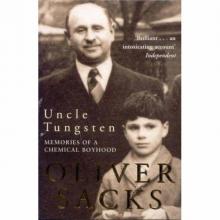 Uncle Tungsten
Uncle Tungsten Oaxaca Journal
Oaxaca Journal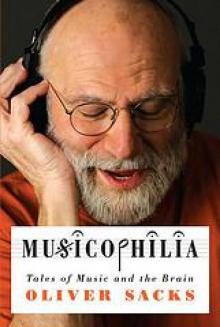 Musicophilia
Musicophilia The man who mistook his wife for a hat
The man who mistook his wife for a hat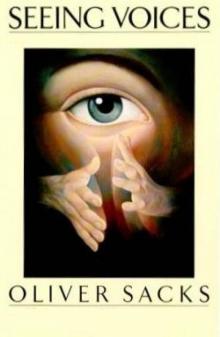 1989 - Seeing Voices
1989 - Seeing Voices On the Move: A Life
On the Move: A Life 1996 - The Island of the Colorblind
1996 - The Island of the Colorblind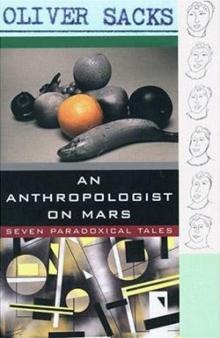 An Anthropologist on Mars: Seven Paradoxical Tales
An Anthropologist on Mars: Seven Paradoxical Tales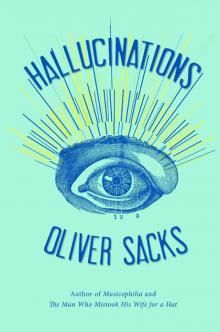 Hallucinations
Hallucinations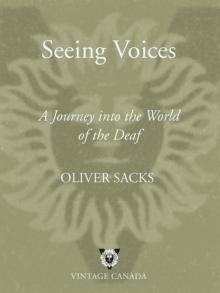 Seeing Voices
Seeing Voices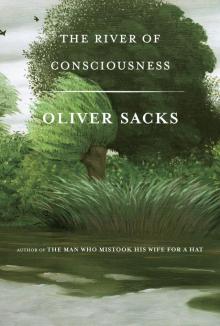 The River of Consciousness
The River of Consciousness Vintage Sacks
Vintage Sacks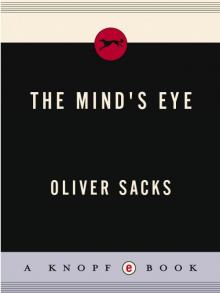 The Mind's Eye
The Mind's Eye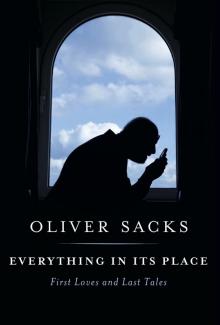 Everything in Its Place
Everything in Its Place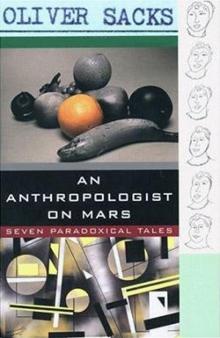 An Anthropologist on Mars (1995)
An Anthropologist on Mars (1995)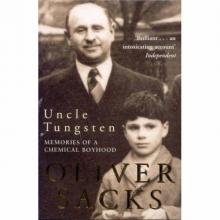 Uncle Tungsten: Memories of a Chemical Boyhood (2001)
Uncle Tungsten: Memories of a Chemical Boyhood (2001)